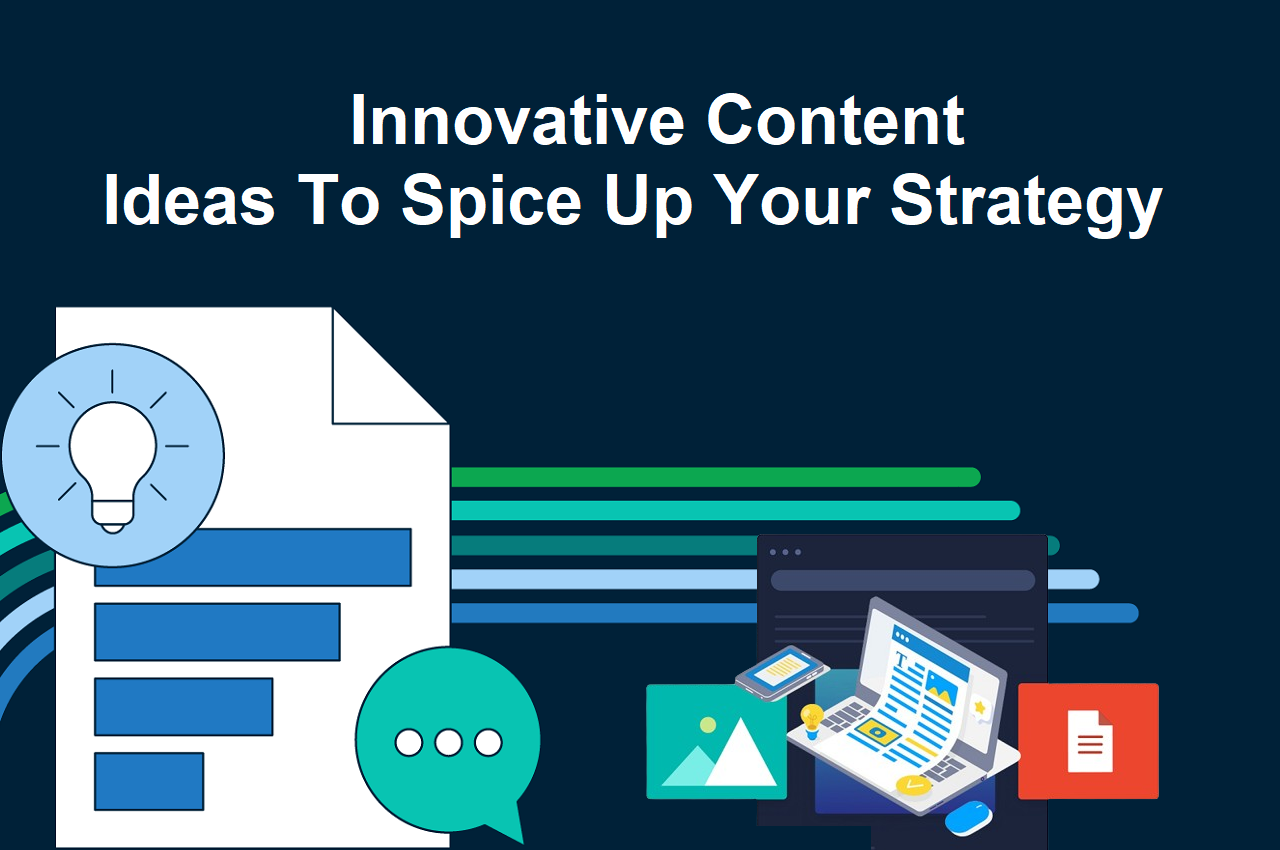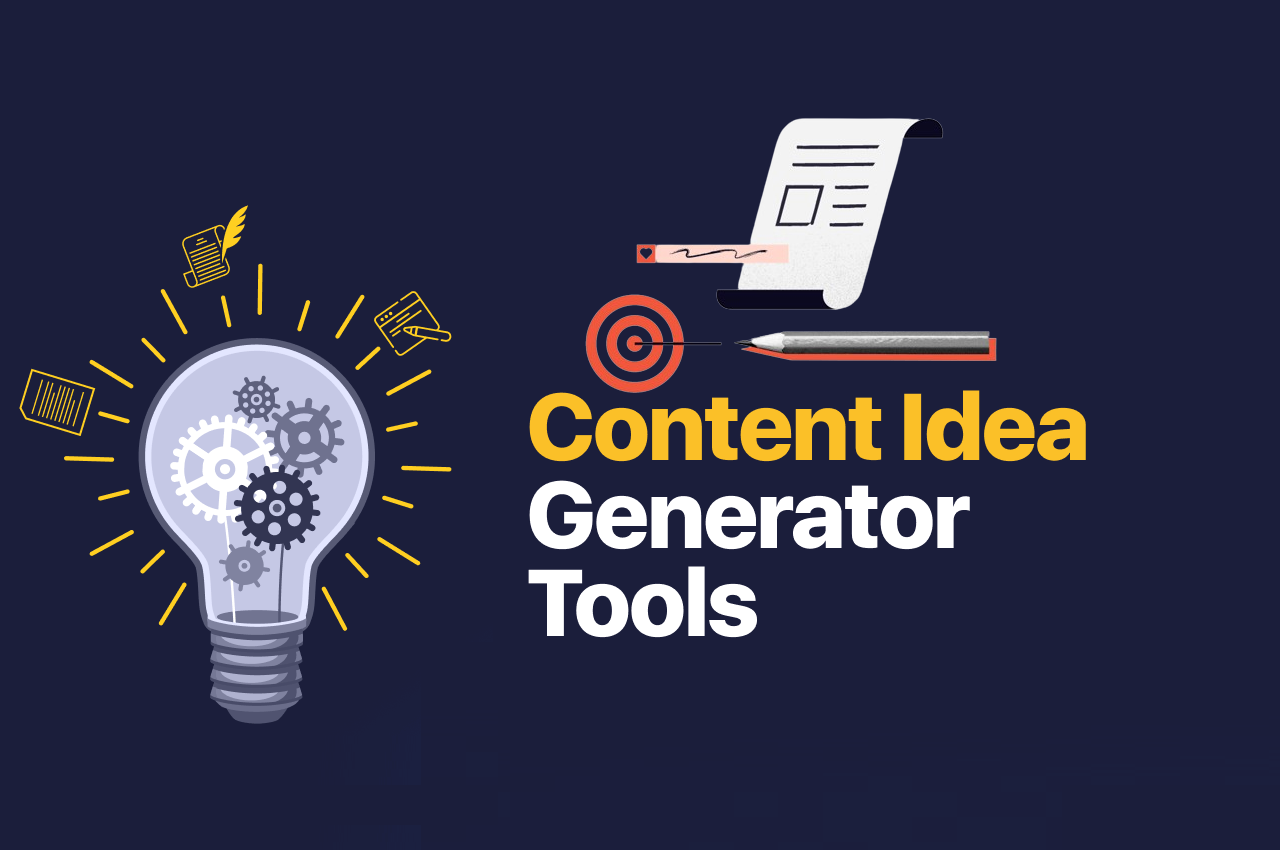Tools That Generate Content Ideas Fast.
In the dynamic landscape of digital content creation, the ability to generate fresh and compelling ideas quickly is essential for bloggers, marketers, and content creators. This guide explores various tools designed to streamline the content ideation process, ensuring a constant flow of engaging and relevant topics.
I. Introduction
A. The Significance of Content Ideas
- Fueling Creativity: Content ideas are the lifeblood of creative endeavors. They provide the foundation for blog posts, articles, videos, and other forms of content that capture audience attention.
- Meeting Audience Needs: Relevant and timely content addresses the needs and interests of your target audience. Understanding what resonates with them is key to building engagement.
B. Challenges in Content Ideation
- Creativity Blocks: Content creators often face creativity blocks, struggling to generate fresh ideas consistently.
- Staying Relevant: The digital landscape evolves rapidly, and staying relevant requires continuous ideation to align with current trends and audience preferences.
II. Manual Content Ideation Techniques
A. Mind Mapping
- Visualizing Ideas: Mind mapping is a visual technique that helps in organizing and connecting ideas. It’s a creative way to explore various topics and their potential intersections.
- Expanding Themes: Start with a central theme and branch out into subtopics. This method encourages the exploration of related ideas, uncovering new angles for content.
B. Trend Analysis
- Industry Trends: Regularly analyze industry trends to stay informed about topics gaining traction. Tools like Google Trends and social media analytics aid in trend identification.
- Competitor Analysis: Study competitors to understand what topics are resonating with their audience. This can inspire unique takes on popular subjects.
III. Tools for Generating Content Ideas
A. Content Discovery Platforms
- BuzzSumo: BuzzSumo helps identify trending topics by analyzing content performance across social media platforms. It provides insights into the most shared and engaging content in a given niche.
- Feedly: Feedly aggregates content from various sources based on user preferences. It’s a valuable tool for staying updated on industry news and discovering trending topics.
B. Idea Generation Tools
- HubSpot’s Blog Ideas Generator: HubSpot’s tool prompts users to enter up to five nouns, generating a week’s worth of blog post ideas. It’s a quick and straightforward way to spark creativity.
- Portent’s Content Idea Generator: This tool suggests creative and catchy titles based on user inputs. It’s a fun resource for generating headline ideas that stand out.
C. Keyword Research Tools
- Google Keyword Planner: Google Keyword Planner provides insights into search volumes and competition for specific keywords. This data helps in creating content aligned with user search queries.
- Ubersuggest: Ubersuggest offers keyword suggestions and content ideas based on entered keywords. It provides data on search volume, competition, and related terms.
D. Social Media Listening Tools
- Hootsuite: Hootsuite allows users to monitor social media conversations around specific keywords or topics. This real-time insight can inspire content creation.
- Brand24: Brand24 tracks mentions and discussions related to a brand or industry on social media. It provides valuable data for identifying trending topics and audience sentiments.
E. Question and Answer Platforms
- Quora: Quora is a platform where users ask and answer questions. Exploring relevant topics on Quora can inspire content ideas that address common queries in your niche.
- Answer the Public: Answer the Public generates content ideas by visualizing common questions related to a specific keyword. It’s a great resource for understanding user queries.
IV. AI-Powered Content Ideation Tools
A. GPT-3 (OpenAI)
- Content Generation: GPT-3 is a powerful language model capable of generating human-like text. It can be used to brainstorm content ideas, create outlines, or even draft portions of articles.
- Language Understanding: GPT-3’s language understanding capabilities enable it to provide contextually relevant content suggestions based on user prompts.
B. Clearscope
- Content Optimization: Clearscope uses AI to analyze top-ranking content for a given keyword. It helps content creators understand the context and relevance of topics, aiding in content optimization.
- Keyword Recommendations: Clearscope provides keyword recommendations based on semantic analysis, assisting in the creation of content that aligns with user intent.
V. Content Ideation Best Practices
A. Audience-Centric Approach
- Understanding Audience Needs: Tailor content ideas to address the specific needs, interests, and pain points of your target audience.
- Engagement Analysis: Analyze audience engagement metrics to identify popular content and replicate its success.
B. Diversification of Content
- Explore Various Formats: Experiment with different content formats, such as listicles, how-to guides, case studies, and interviews.
- Visual and Multimedia Content: Integrate visual elements and multimedia content to diversify the user experience and cater to different preferences.
C. Evergreen and Timely Content
- Evergreen Content: Include evergreen content that remains relevant over time. This ensures a steady flow of traffic and continuous engagement.
- Timely Topics: Stay attuned to current events and trends to create timely content that resonates with the current interests of your audience.
VI. Overcoming Challenges in Content Ideation
A. Collaborative Brainstorming
- Team Brainstorming Sessions: Conduct collaborative brainstorming sessions involving team members from various departments to bring diverse perspectives.
- Online Collaboration Tools: Utilize online collaboration tools that facilitate remote brainstorming. Platforms like Miro and Trello enable virtual idea sharing.
B. User Feedback Integration
- Feedback Channels: Actively seek feedback from your audience through comments, surveys, and social media. User insights can inspire new content ideas.
- Adaptation to Trends: Adapt content based on user feedback and evolving trends. A responsive approach ensures that the content remains aligned with audience expectations.
VII. Future Trends in Content Ideation
A. AI-Enhanced Ideation
- Advanced Language Models: The evolution of AI language models will lead to more advanced content ideation tools that understand context and generate highly relevant ideas.
- Personalized Suggestions: AI tools will offer personalized content suggestions based on user behavior, preferences, and historical interactions.
B. Integration of Visual Recognition
- Visual Content Suggestions: Future tools may incorporate visual recognition technology to suggest content ideas based on images, infographics, and visual trends.
- Multimodal Ideation: Tools might evolve to provide multimodal ideation, combining text and visual elements seamlessly for a holistic content creation experience.
VIII. Conclusion
In conclusion, content ideation is a dynamic process that involves creativity, strategic thinking, and the effective use of available tools. Whether using manual techniques, leveraging online platforms, or embracing AI-powered solutions, content creators have a plethora of resources to spark ideas and stay ahead in the competitive digital landscape.
As technology continues to advance, the integration of AI and evolving trends in content creation will shape the future of ideation tools. By adopting a user-centric approach, diversifying content formats, and staying adaptable to industry shifts, content creators can ensure a continuous flow of fresh and engaging ideas that resonate with their audience.


